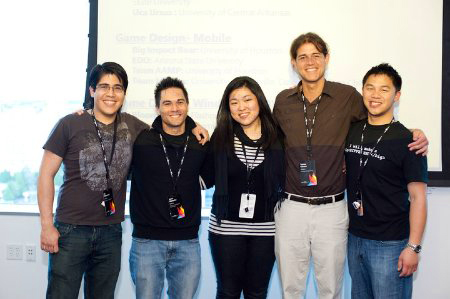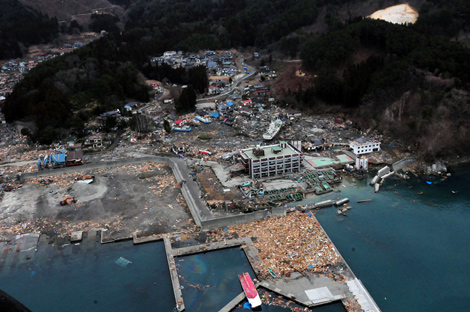Posted on July 16th, 2011 by axb

University of California, Los Angeles
Electrical Engineering
“I grew up playing video-games and watching science-fiction movies. I would remember all the cool, futuristic technology I would use in these games, and I realized that I wanted to study how to someday make something that ‘fake’ into reality.”
Read More
Filed under: Computer, Electrical, Meet More Students | 1 Comment »
Tags: Computer, Electrical, SMART
Posted on July 14th, 2011 by axb

A mosquito-blasting laser gun is a sensible weapon for fighting malaria — but a smartphone? Turns out that high-def touchscreen might be good for more than video chatting and slinging angry birds.
Five graduate students have designed a smartphone app for the 2011 Imagine Cup that will allow doctors to quickly and accurately diagnose malaria. It works by analyzing data from the phone’s camera – which has been outfitted with a microscopic lens – to determine whether malarial parasites are present in blood samples.
Read More
Filed under: Biomedical, Computer, e-News | 5 Comments »
Tags: Biomedical, Computer
Posted on April 15th, 2011 by jxh

If you’re a criminal in Brazil, you may soon find it more difficult to hide from the police.
That’s because Brazilian police officers will be outfitted with special sunglasses equipped with facial recognition technology.
Read More
Filed under: Computer, e-News | 1 Comment »
Tags: Computer
Posted on March 22nd, 2011 by axb

Ask anyone to name a famous robot, and it is likely they will mention characters like C-3PO, R2-D2, Wall-E, and Optimus Prime. What all of these friendly androids from film have in common is something that the majority of modern robots lack: the ability to converse with humans.
Cynthia Breazeal, an electrical and computer engineer, has dedicated her career to making robots more sociable. She is currently the director of the Personal Robots Group at the MIT Media Lab, where she researches and develops machines that can teach, learn, talk, and mimic human emotions.
Read More
Filed under: Computer, e-News, Electrical, Trailblazers | 5 Comments »
Tags: Computer, Electrical, Robotics, Trailblazers
Posted on March 17th, 2011 by axb

An aerial view of damage to Wakuya, Japan, after March 11 earthquake and tsunami
Last Friday, Japan was hit with a devastating earthquake of 9.0 magnitude. In combination with the following tsunami, the earthquake caused immense damage to northeastern regions of Japan and severely compromised six nuclear power-plant reactors. Recent reports estimate the death toll at over 5,000, with another 9,000 people missing and 2,500 injured. Over 4 million households were left without electricity, and 1.5 million without running water.
Since the tragedy stuck, scientists and engineers have been working around the clock to find and help survivors, as well as to avert potential nuclear meltdowns.
Read More
Filed under: Computer, e-News, Electrical, Environmental, Nuclear | 3 Comments »
Tags: Computer, Electrical, Environmental, Giving Back, Nuclear, Robotics













